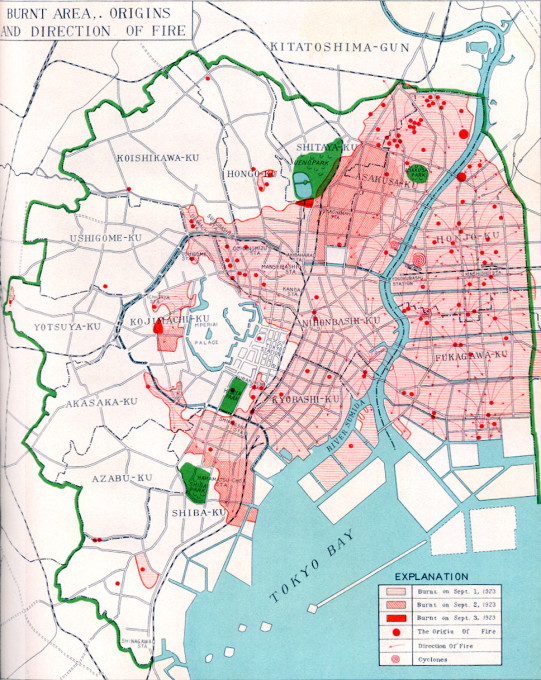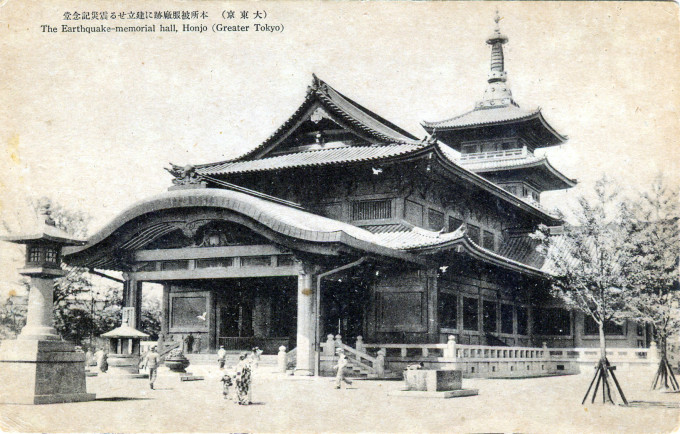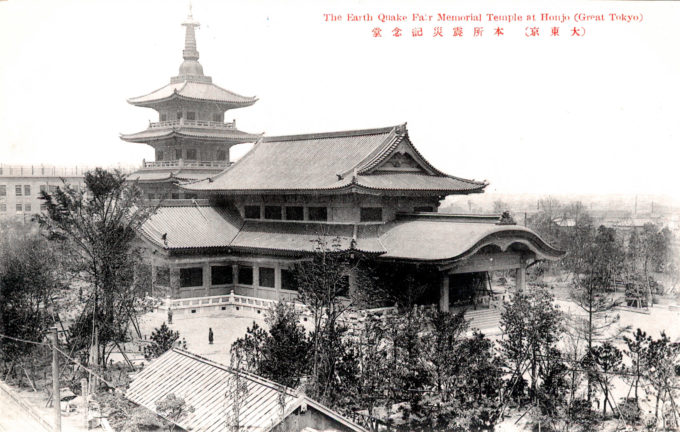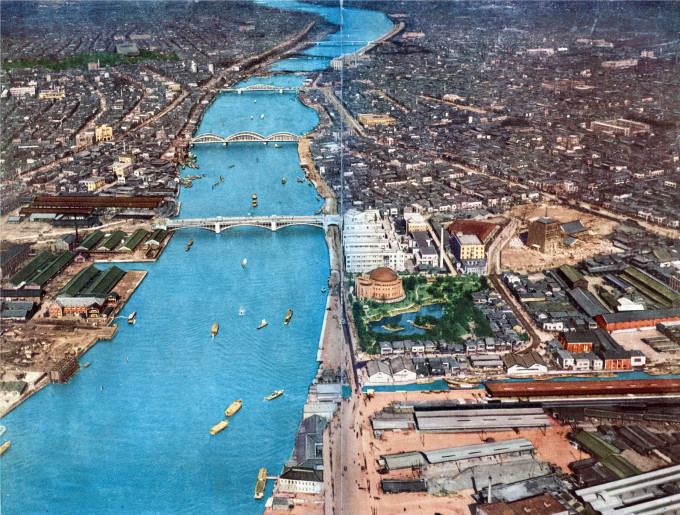“Yokoamicho Park was formerly the site of the Army’s clothing depot. After the facility was moved elsewhere, Tokyo City purchased the land. Work was in progress on a park when the Kanto Earthquake struck on 1 September 1923 at 11:58 a.m. Tens of thousands sought refuge on this site, and the belongings they brought with them caught fire. Powerful winds swept the area, and 38,000 refugees lost their lives.
“A memorial temple was subsequently constructed on the site to house the remains of victims of the earthquake. Its role was later expanded to include the victims of the air raids in World War II and other disasters. The ashes of some 163,000 people are now enshrined there.
“A competition was held for the temple, but in the end, the building was designed, not by the winner, but by Chuta Io, the architect and architectural historian. The massive hall, which has a steel-frame reinforced concrete structure, draws heavily on Buddhist architecture for inspiration on the exterior.”
– The Architecture of Tokyo, Watanabe Hiroshi, 2001

Tokyo, Great Kanto Earthquake damage, 1923, illustrating the origins and extent of fire damage. The fire cyclone symbol at Ryogokubashi Station (at right-center) is the site of the Tokyo Memorial Temple. (Source: Tokyo Reconstruction Work, Tokyo Municipal Office, 1930.
“On the walls [of Cenotaph Hall] are oil paintings depicting the Great Earthquake, works by and artist who made many sketched of the disaster immediately after.
“The interior design is a unique combination of a Christian chapel and a Buddhist altar, and the exterior stairways resemble those of a Shinto shrine. As you leave the park from its front gate, look back at the overall design of the hall, which is based on the image of a bird about to fly up with spread wings. The architect was Dr. Chuta Ito, who also designed the the Hogan-ji temple in Tsukiji and Meiji-jingu shrine in Harajuku.”
– Old Tokyo: Walks in the City of the Shogun, Sumiko Enbutsu, 1993




